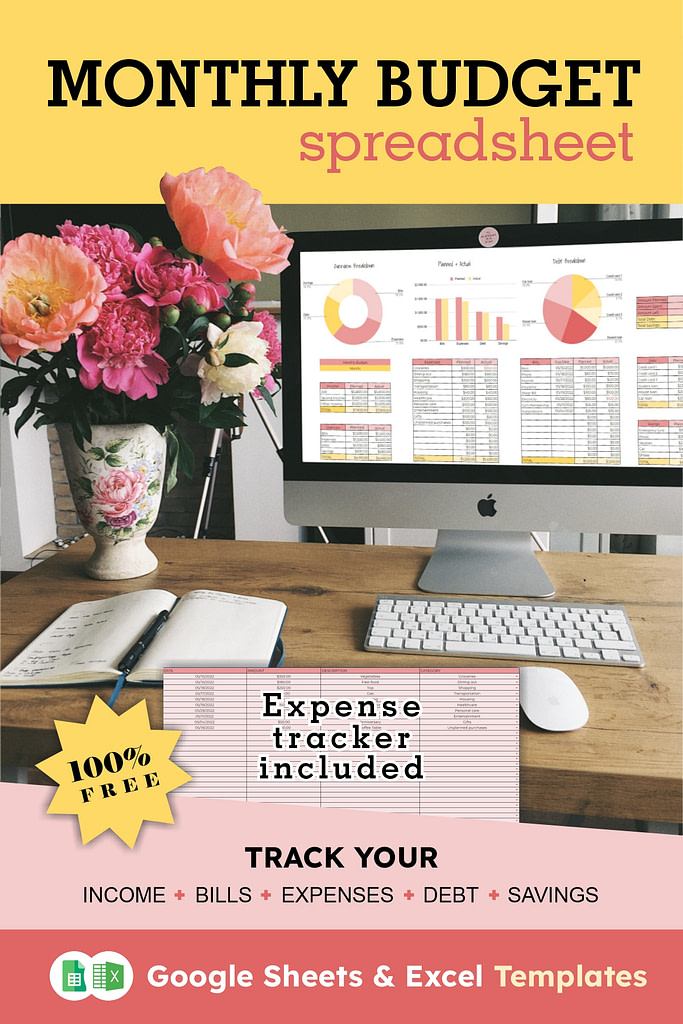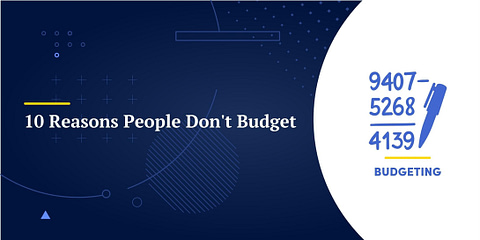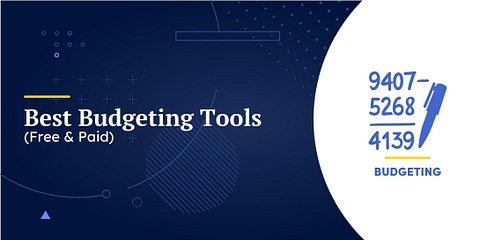Everyone needs a budget. But while deciding to budget is easy, choosing a budgeting method may be more complicated. There are many budgeting methods and types of budgets. Here are some of the best.
5 Best Budgeting Methods
There’s no right or wrong budgeting method. Choosing a realistic method that fits your needs will make it easier for you to follow your budget and realize the advantages of budgeting.
💡 As you read through these five budgeting methods, envision how each method would fit in your life, and consider whether the method would fit your personality and financial situation.
1. The Zero-Based Budget
A zero-based budget is one of the simplest: you subtract your expenses from your income. The goal is to have $0 left once you subtract your expenses.
A zero-based budget is ideal for those who have a predictable income and fairly predictable expenses. You start with your income at the beginning of the month (or whatever time period you need). You list each expense for the time period and subtract it from your income. If you have any “leftover” income that doesn’t fall into a specific category, you need to allocate the money. The idea is to allocate each dollar until you reach $0, which is where the name zero-based comes from.
With this method, one large unexpected expense can throw your math completely off course. If you go with the zero-based method, it’s a smart idea to have an emergency fund or cushion in your checking account. On the other hand, it forces you to track every expense so you know where your money is going at all times.
| Expense | Income: $4,000 |
|---|---|
| Mortgage | -$1,000 |
| Utilities | -$500 |
| Debt (Car) Payment | -$500 |
| Savings | -$300 |
| Insurance | -$100 |
| Groceries | -$600 |
| Transportation/Fuel | -$400 |
| Medical | -$100 |
| Eating Out | -$100 |
| Entertainment | -$100 |
| Clothing | -$75 |
| Miscellaneous/Unknown | -$225 |
| TOTAL EXPENSES: | -$4,000 |
| $4,000 income - $4,000 expenses=$0 |
➕ Pros:
- Forces you to track all income and expenses.
- Ideal for those with predictable income and steady expenses.
➖ Cons:
- One unexpected expense can throw off your budget.
- You must predict your expenses accurately and thoroughly.
2. The Envelope System
Another budgeting method that’s very similar to the concept of zero-based is the envelope system. The idea is the same: you begin with your income and subtract each of your expenses until all your money is allocated. What’s different is that you put as much of your money as possible in cash, literally in an envelope.
As clunky as this method might sound, it remains popular with those who are trying to curb their spending habits in categories such as groceries, fuel, and entertainment.
If you allocate $100 per month towards fuel, you would withdraw $100 cash and put it in an envelope. Anytime you need fuel, you reach for cash from your envelope marked “fuel.” When you need to pay, you can only pay for it from your designated envelope. Once you run out of cash for the category, that’s it. You have to wait to replenish it when you receive more income.
If you have money left in an envelope at the end of your budget period, you roll it into the next month or put it towards a goal (like paying debt or padding your savings). If you have an emergency and need the cash, instead of taking from an envelope like fuel, you use your emergency funds.
This method has been championed by several personal finance experts including Dave Ramsey. Recently, this budgeting method experienced quite a revival. In 2021 and 2022, videos showcasing the envelope system, rebranded as “cash stuffing“, had over 500 million views on TikTok.
It forces you to be disciplined with your money and stop yourself from overspending. But the method can be tough for some who find keeping up with envelopes cumbersome and inconvenient.
➕ Pros:
- Keeps you from overspending.
- Teaches you discipline with every single dollar.
➖ Cons:
- Many consumers prefer not to pay with cash or carry cash.
- Only works with categories you physically walk into a store to purchase (groceries, fuel, clothing).
3. The 50/30/20 Budgeting Method
If you’re looking for a budgeting method that isn’t as detailed as the zero-based or the envelope system but still guides your money, then the 50/30/20 might be for you. The categories break down like this:
- 50% necessities
- 30% discretionary
- 20% for savings and/or debt repayment
The key to making this budget work is your definition of needs and wants. As long as you define these early on, you shouldn’t have any issues.
You can change the percentage of the categories to better reflect your current needs. For instance, if you have a large student loan you want to aggressively pay off in 12 months, you would increase the 20% for debt repayment to meet this goal and take money from another category to cover it.
➕ Pros:
- Good option if you’re trying to pay down debt.
- The percentage of each category can change to fit your needs.
➖ Cons:
- You have to clearly define wants versus needs.
- You must update the percentage of each category to align with your goals.
Use our 50/30/20 budget calculator to estimate how you should divide your monthly income using this budgeting method:
4. Pay Yourself First or 80/20 Budget
This budget is designed for those who need extra discipline to save money. Any time you receive income, you pay yourself first by putting a designated amount towards your savings or retirement accounts.
You can apply this same method to debt repayment as well. You might see it referred to as the 80/20 budget: 20% would go towards your savings (or debt) goal and the remaining 80% covers all other items.
With the remaining money, you pay for your necessities and your discretionary items, but you don’t track every dollar. The reason you don’t have to watch every remaining dollar is because you’ve already paid your two most important categories first. This is a good option for those who want to aggressively build up their retirement or savings funds, or pay off debt. It’s also ideal for those who don’t like to track all their expenses on a daily basis.
➕ Pros:
- Good option if you’re trying to pay down debt or save.
- You don’t have to track every expense.
➖ Cons:
- You can easily overspend since you’re not tracking.
- You have to learn to live on 20% less.
5. Reverse Budgeting
This method is similar to the Pay Yourself First idea of budgeting. With reverse budgeting, you focus on one major money goal each month, usually a different goal each time. You would still follow the 80/20 rule, but the 20% you designate goes toward a different goal every month.
Examples of your goals might look like one of these:
- Add $500 to your emergency fund
- Pay off a $400 credit card balance
- Add an additional $500 to your 401(k)
Once you put the designated amount towards your goal, your remaining income covers the rest of the expenses. Like the 80/20 budget, since you’ve paid yourself first, you don’t have to track every expense going in and out.
Like the Pay Yourself First, this is ideal for those who don’t want to bother with tracking every expense but need aggressive measures to achieve their money goals.
➕ Pros:
- Simple to use and follow.
- You can aggressively tackle big money goals.
➖ Cons:
- Easy to overspend because you’re not tracking.
- You’ll have to learn to live on 20% less.

Free Monthly Budget Spreadsheet Template
- This simple monthly budget template makes budgeting fun and exciting.
- Easy-to-follow instructions so you can get started budgeting in no time.
- Access your budget online from anywhere. See all features
Why It’s Worth the Time to Find the Right Budgeting Method
78% of Americans admit that they live paycheck to paycheck[1], which makes them vulnerable to any financial emergency. Building and following a realistic budget is the key to breaking out of that paycheck-to-paycheck pattern. A budget will help you allocate money to specific categories and build an emergency fund. If you stick with your budget and manage it well you’ll soon be saving money for emergencies, pursuing goals like buying a new car or a home or even preparing for retirement.
👉 A budget gives you control over your money. When you’re tracking your expenses and you know what’s coming and going, you are less likely to face those money surprises that throw us off track.
A budget is only a tool. If you choose the right tool and use it well, it will help you. If you don’t, it’s nothing more than addition and subtraction. Budgets are often based on unrealistic expectations about money, and that makes them difficult for some people to follow. The key to the right budgeting method is finding one you can use on a daily basis and basing it on realistic numbers and expectations.
How to Choose a Budgeting Method?
Budgets are personal. This means you should choose a budget method that works with your strengths and fits your income and spending habits. You know yourself and your goals better than anyone.
Once you’ve clearly defined your own money goals, both short-term and long-term, then you can narrow down the budget method you think would work best.
The most productive way to start your budget is to track your actual spending. This will show you the habits you need to adjust and allow you to base your budget on real, concrete numbers. When it comes to budgets, vagueness and guesswork are surefire ways to set up unrealistic expectations. Almost everybody who tracks their daily spending finds significant expenses they didn’t know they had. Building a budget on an unrealistic spending estimate can easily lead to frustration and even giving up on budgeting.
➗ Get started right away! Use our online Budget Calculator to see how much money you have coming in and what you’re spending it on.
If one of these budgeting methods ends up not working for you, it’s okay to try a different one. You may have to work through a few until you find the right one. You’ll know you’ve found the right budgeting method when you learn to stick with it and start making progress towards your money goals.
























